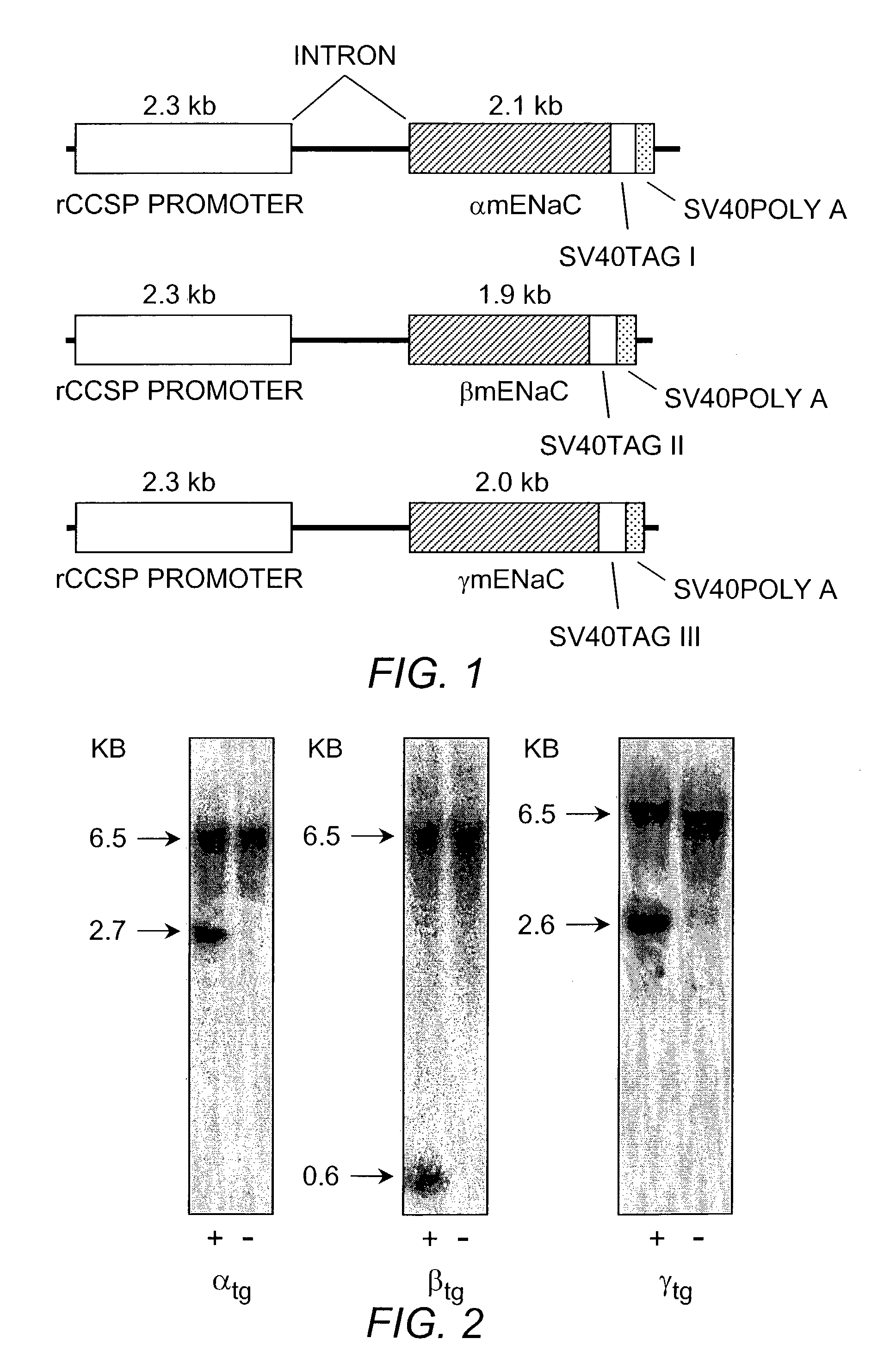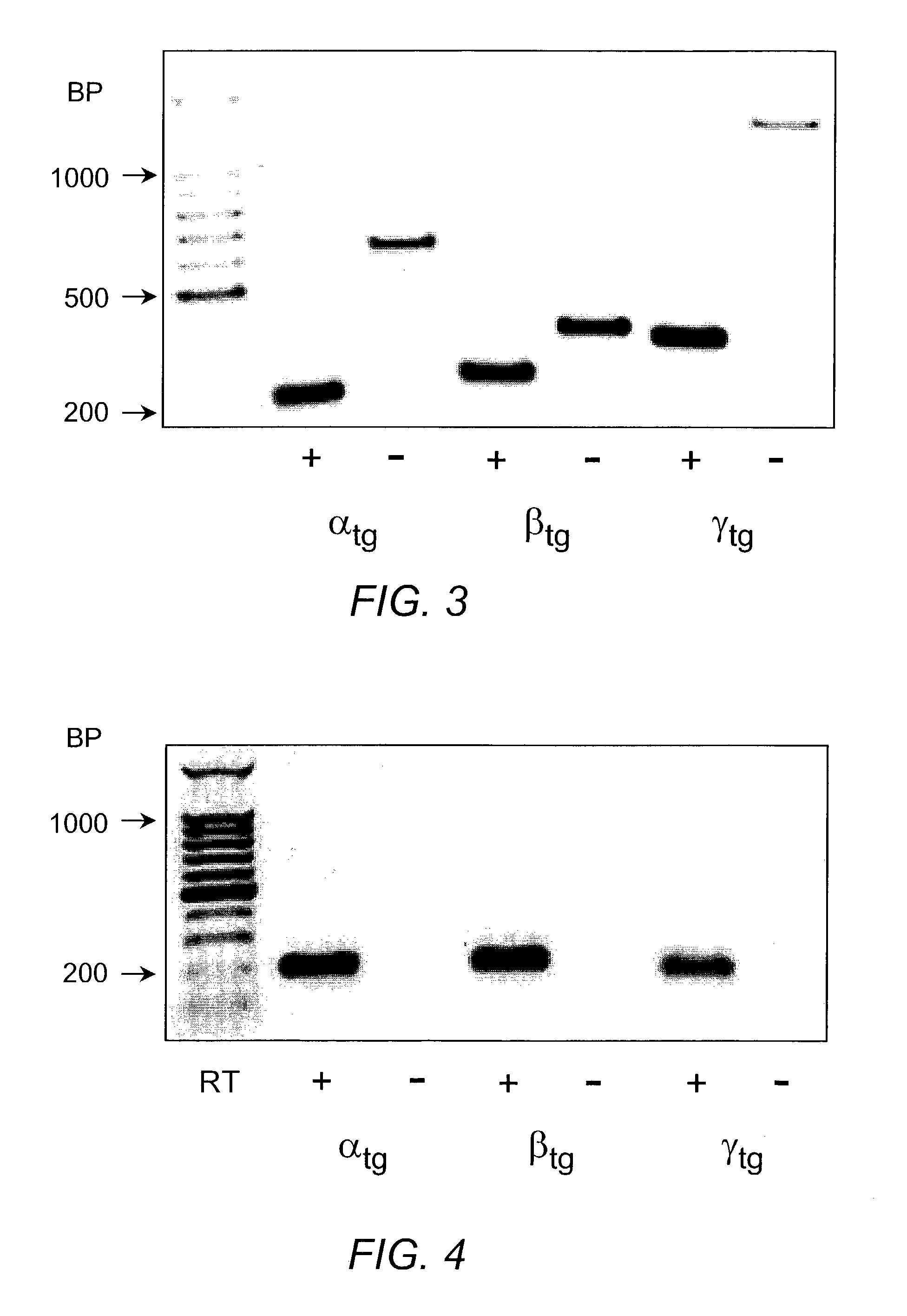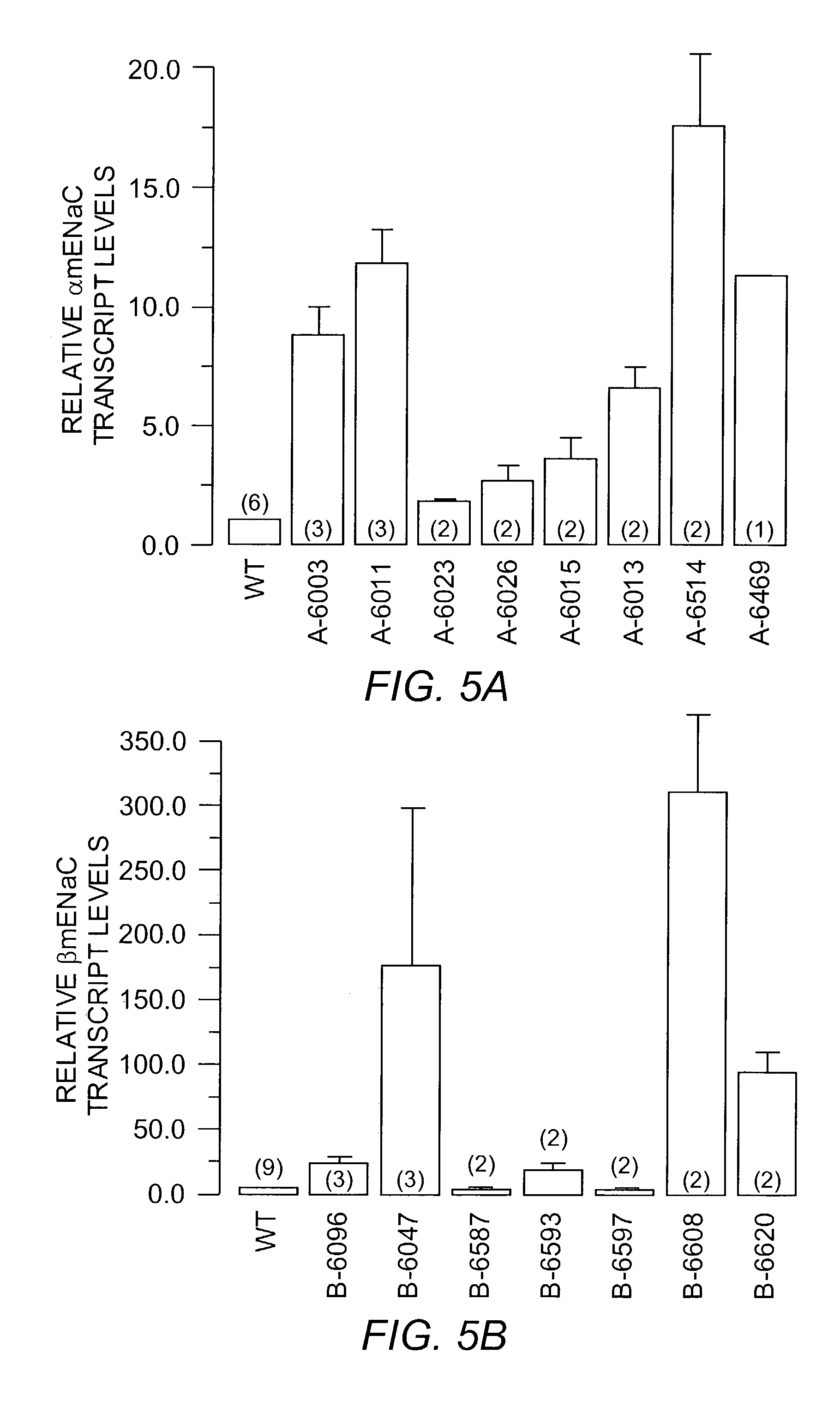Animal model for chronic obstructive pulmonary disease and cystic fibrosis
a chronic obstructive pulmonary disease and cystic fibrosis technology, applied in the field of nonhuman transgenic animals, to achieve the effect of increasing mortality and increasing lung mucus plugging
- Summary
- Abstract
- Description
- Claims
- Application Information
AI Technical Summary
Benefits of technology
Problems solved by technology
Method used
Image
Examples
example 1
Preparation of Transgenic Mice
[0055]Transgenic constructs for airway specific overexpression of α, β and γ mENaC. are schematically illustrated in FIG. 1. Transgenic mouse lines overexpressing α-, β-, or γ-ENaC under the control of the CCSP promoter were produced as follows: To generate plasmids for individual ENaC subunits we made use of pTG1 plasmid (obtained from Dr. Randy Thresher, Animal Model Core facility, UNC) containing two multiple cloning sites (MCS1 and MCS2), separated by an intron, and followed by a SV40 polyadenylation signal.
[0056]The rat CCSP promoter (rCCSP) was obtained from Dr. J D Gitlin J D (for reference see: Hackett B P and Gitlin J D. Cell-specific expression of a Clara cell secretory, protein-human at growth hormone gene in the bronchiolar epithelium of transgenic mice. Proc Natl Acad Sci USA 1992 Oct. 1; 89(19):9079-83), amplified from plasmid by PCR, and cloned into MCS1 of pTG1.
[0057]ENaC subunits from mouse (α-, β-, γ-mENaC) were obtained from Dr. Tomas...
example 2
Detection of Transgenes in Transgenic Mice
[0060]The detection of α, β and γ mENaC transgenes by Southern blotting is shown in FIG. 2. Transgenic (Tg) positive mice were identified by hybridization with P32-labeled transgene-specific probes, resulting in a 2.7 kb band for αtg, a 0.6 kb band for βtg and a 2.6 kb band for γtg.
[0061]The detection of α, β and γ mENaC transgenes by PCR from genomic tail DNA is shown in FIG. 3. Length of different PCR products: αtg 228 bp vs αwt˜650 bp; βtg 255 bp vs βwt˜350 bp; γtg 334 bp vs γwt 1200 bp.
[0062]The detection of expression of α, β and γ mENaC tg transcripts in mouse airways by RT-PCR from tracheal tissue is shown in FIG. 4. Expression of tg transcripts in tissue of tg positive mice was detected by amplification of PCR products of the expected size after reverse transcription of total RNA and using tg specific primer pairs.
[0063]A quantitation of expression levels of α(A), β(B), and γ mENaC (C) transgenes relative to WT in tracheal tissues of...
example 3
Survival of Transgenic Mice
[0064]Survival curves of α-, β- and γ-mENaC transgene positive (tg / −) mice and wild-type (− / −) littermate controls are shown in FIG. 6. (A) α, (B) β, and (C) γENaC tg mice. All tg mice were heterozygous for the transgene.
PUM
| Property | Measurement | Unit |
|---|---|---|
| height | aaaaa | aaaaa |
| TEM | aaaaa | aaaaa |
| light microscopy | aaaaa | aaaaa |
Abstract
Description
Claims
Application Information
 Login to View More
Login to View More - R&D
- Intellectual Property
- Life Sciences
- Materials
- Tech Scout
- Unparalleled Data Quality
- Higher Quality Content
- 60% Fewer Hallucinations
Browse by: Latest US Patents, China's latest patents, Technical Efficacy Thesaurus, Application Domain, Technology Topic, Popular Technical Reports.
© 2025 PatSnap. All rights reserved.Legal|Privacy policy|Modern Slavery Act Transparency Statement|Sitemap|About US| Contact US: help@patsnap.com



